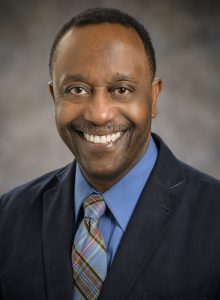Excerpt
Time: Your Doctor’s Appointments Have Been Canceled. Are At-Home Tests a Good Solution

Gary LeRoy, M.D. associate professor of family medicine and associate dean of student affairs and admissions at the Boonshoft School of Medicine.
The benefits of at-home testing are obvious. It’s convenient, confidential and potentially improves health care for people in areas where access is limited. The COVID-19 outbreak has emphasized those benefits more than ever. Offering accurate, scientifically validated tests at home could ease dangerous burdens on the health care system, including testing shortages. It could also prevent some routine medical care from grinding to a halt, as more and more resources are diverted toward COVID-19 response.
But doctors have their doubts. “A test is only as good as the specimen,” says Dr. Gary LeRoy, president of the American Academy of Family Physicians and associate professor of family medicine at the Wright State University Boonshoft School of Medicine. But most people are not experienced at collecting test samples, and so are likely to get it wrong, LeRoy says.
View the original story at time.com
New York Times, Reuters: U.S. hospitals halt lucrative procedures amid coronavirus crisis, job cuts follow
For hospitals stopping elective surgeries, the financial impact has been immediate.
St. Claire HealthCare, a Kentucky-based medical center, furloughed 300 employees, or 25% of its workforce, following a “significant decline” in patient visits. Those furloughed were not directly involved in patient care and would be recalled if government funding becomes available, it said in a statement.
Primary care doctors have also seen in-person visits plummet, adding pressure to small practices that operate with thin margins, said American Academy of Family Physicians President Dr. Gary LeRoy.
LeRoy’s Dayton, Ohio, practice is taking on only urgent visits. Like other family physicians in the group, he now sees patients via telemedicine, though the technology has raised concerns about payment.
“If you’re billing for it now, the question was, when do I get reimbursed for it? Is it 60 days from now? I might not have a practice 60 days from now if I’m just going to do three-fourths of my practice by telemedicine,” he said.
View the original story at reuters.com or nytimes.com

 Top 10 Newsroom videos of 2025
Top 10 Newsroom videos of 2025  Museum-quality replica of historic Hawthorn Hill donated to Wright State
Museum-quality replica of historic Hawthorn Hill donated to Wright State  Wright State celebrates more than 1,000 graduates at fall 2025 commencement
Wright State celebrates more than 1,000 graduates at fall 2025 commencement  2026 Alumni Achievement Awards celebrate distinguished Wright State community members
2026 Alumni Achievement Awards celebrate distinguished Wright State community members  Bags, boards and bonding
Bags, boards and bonding 